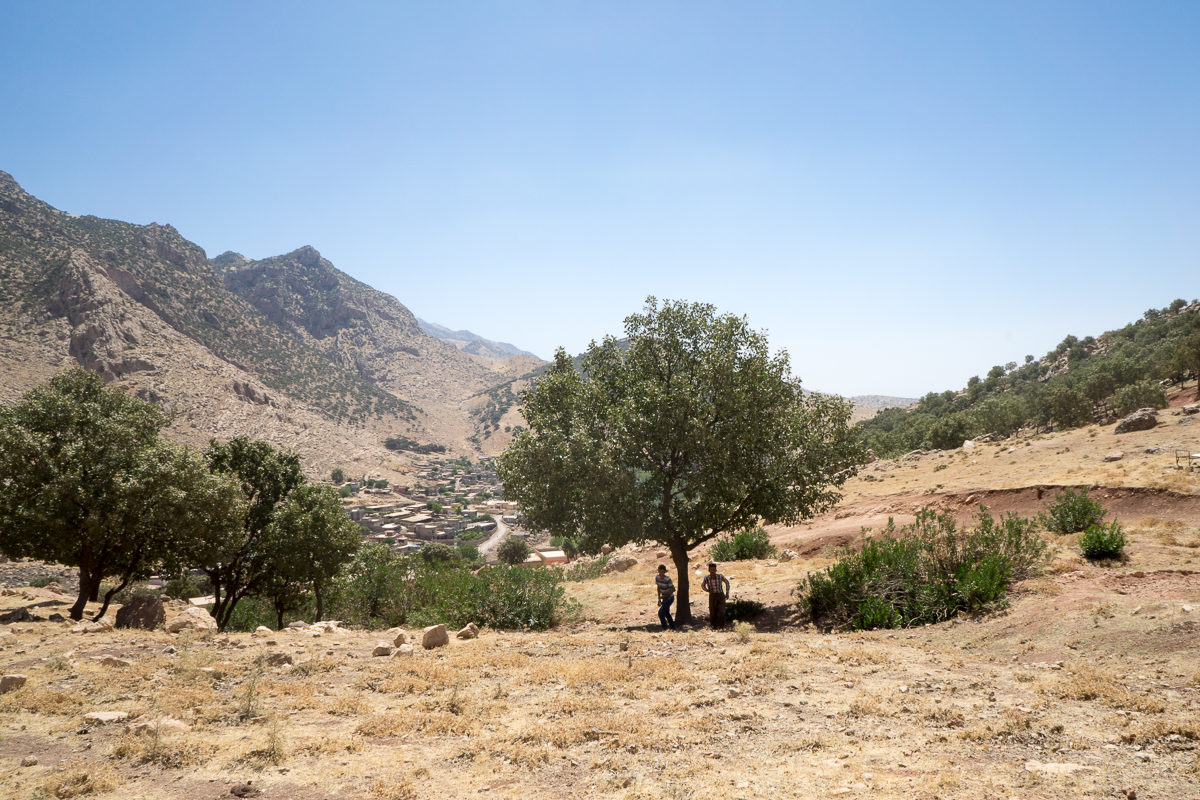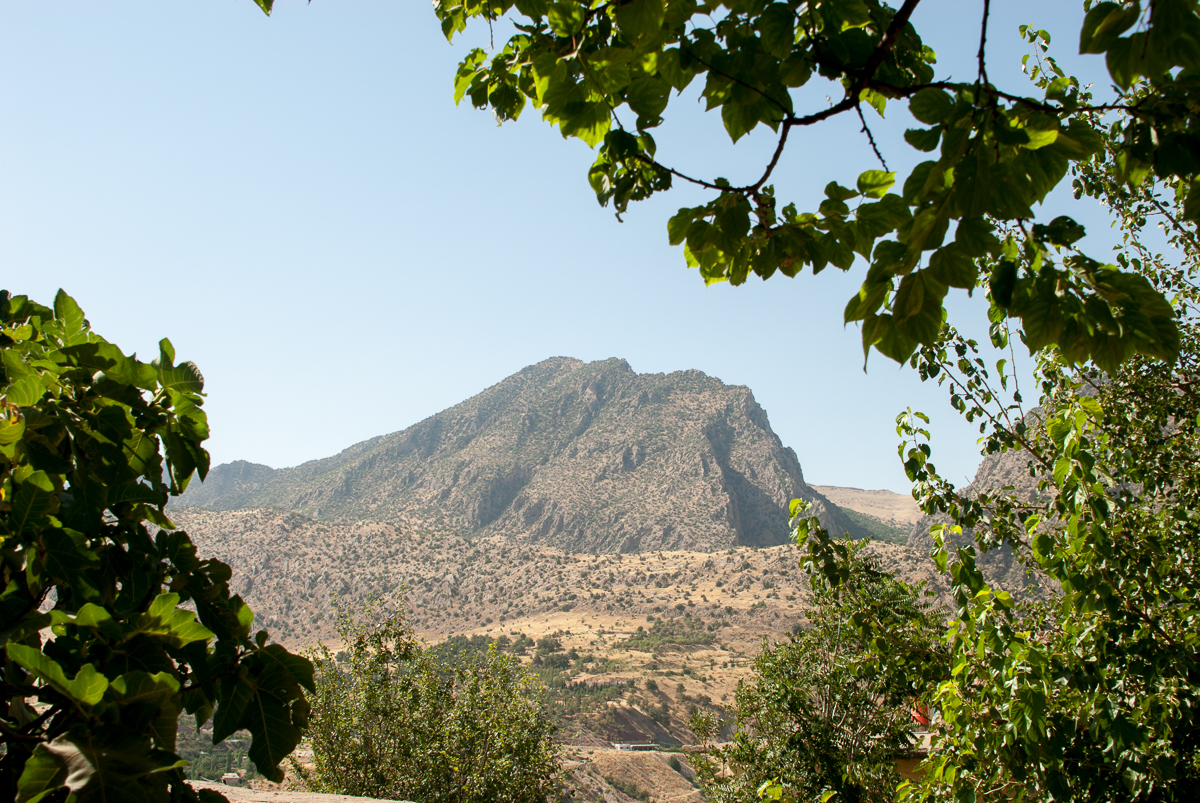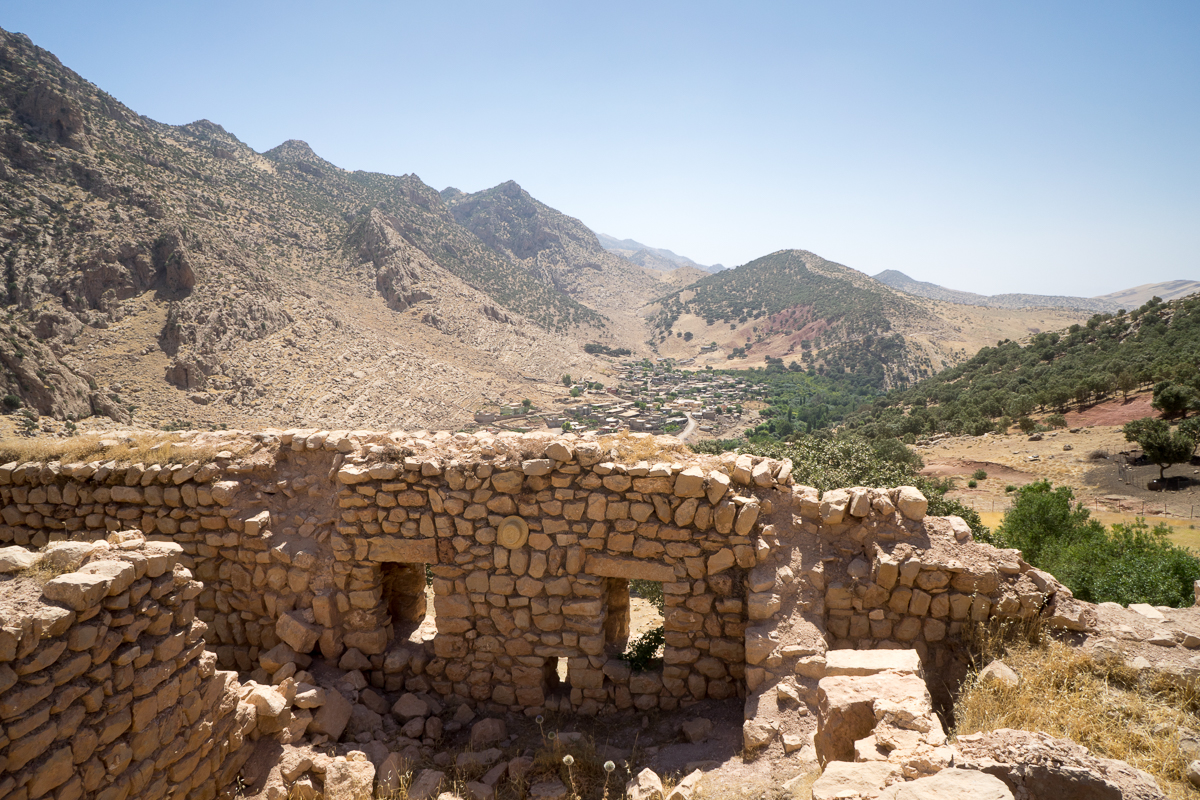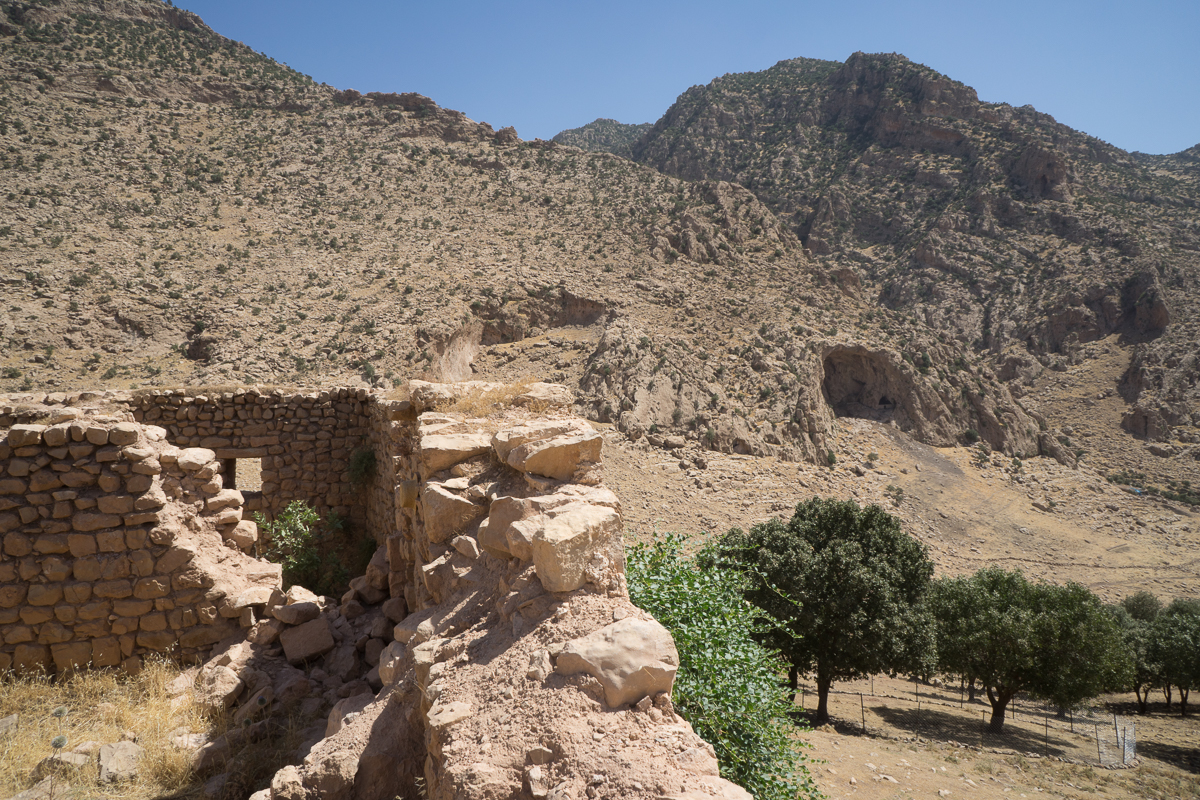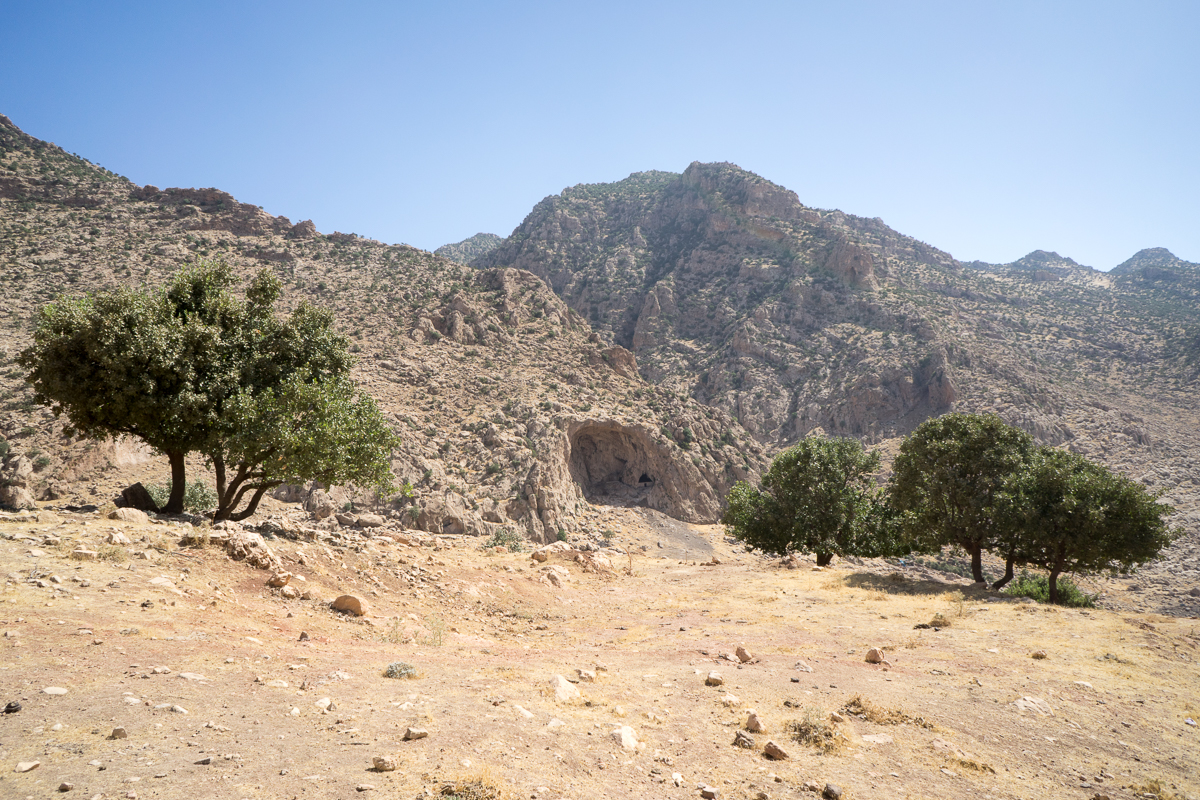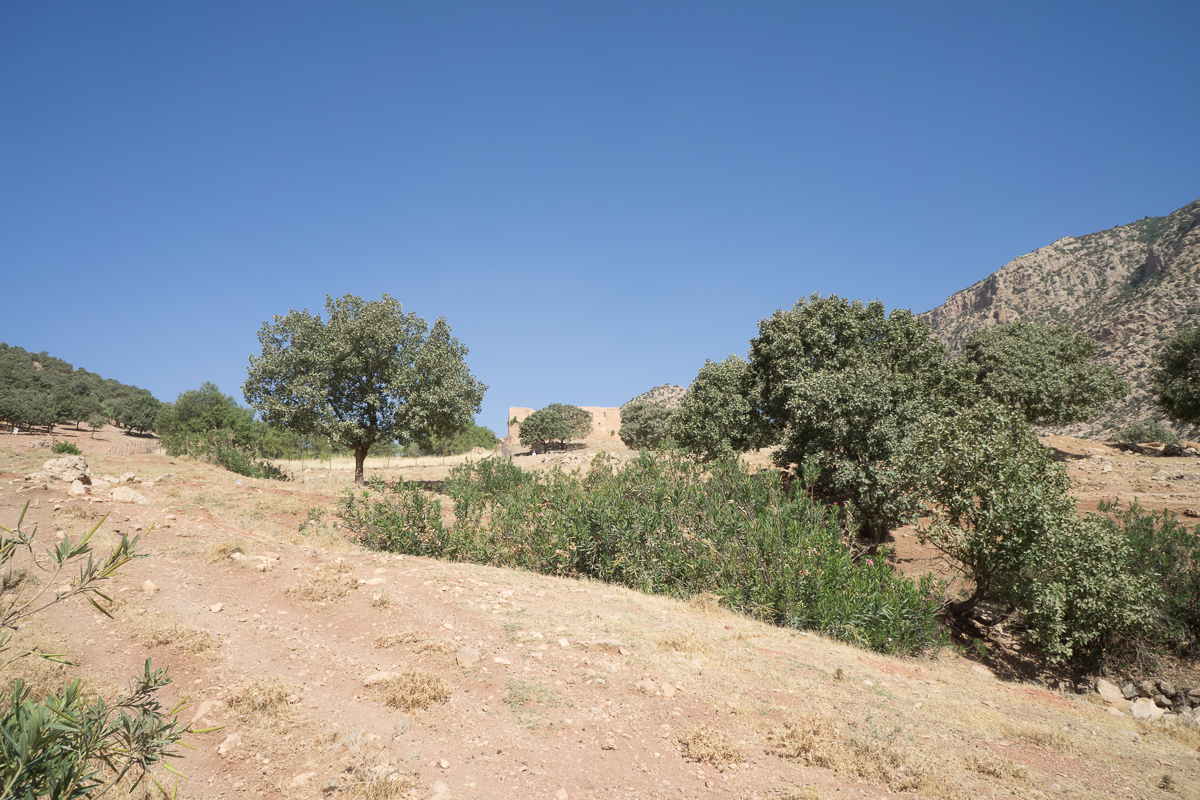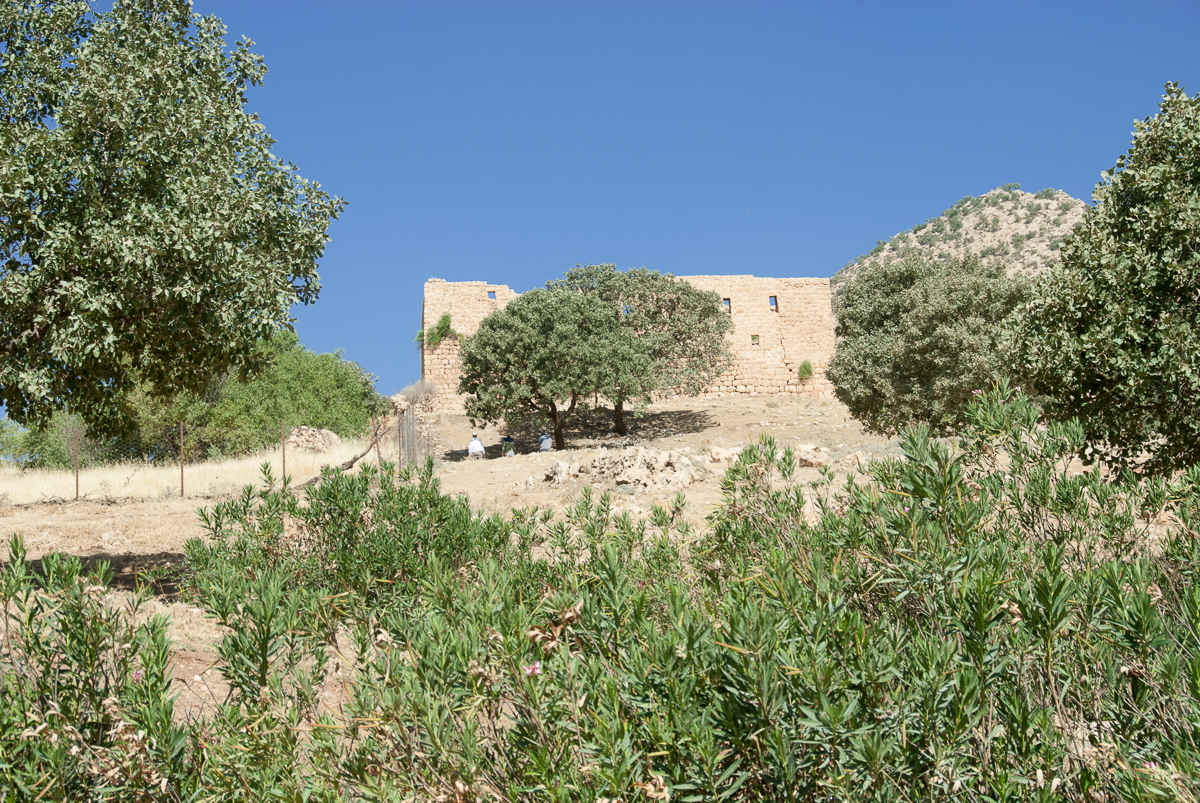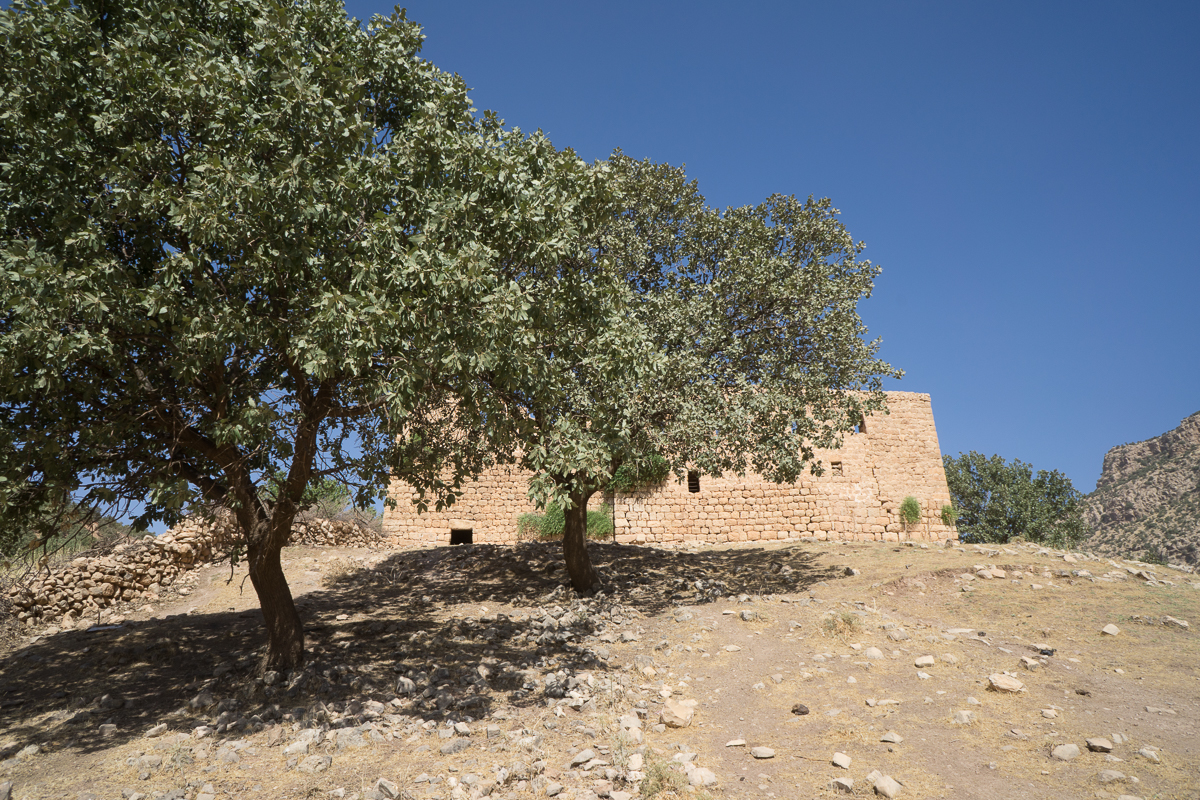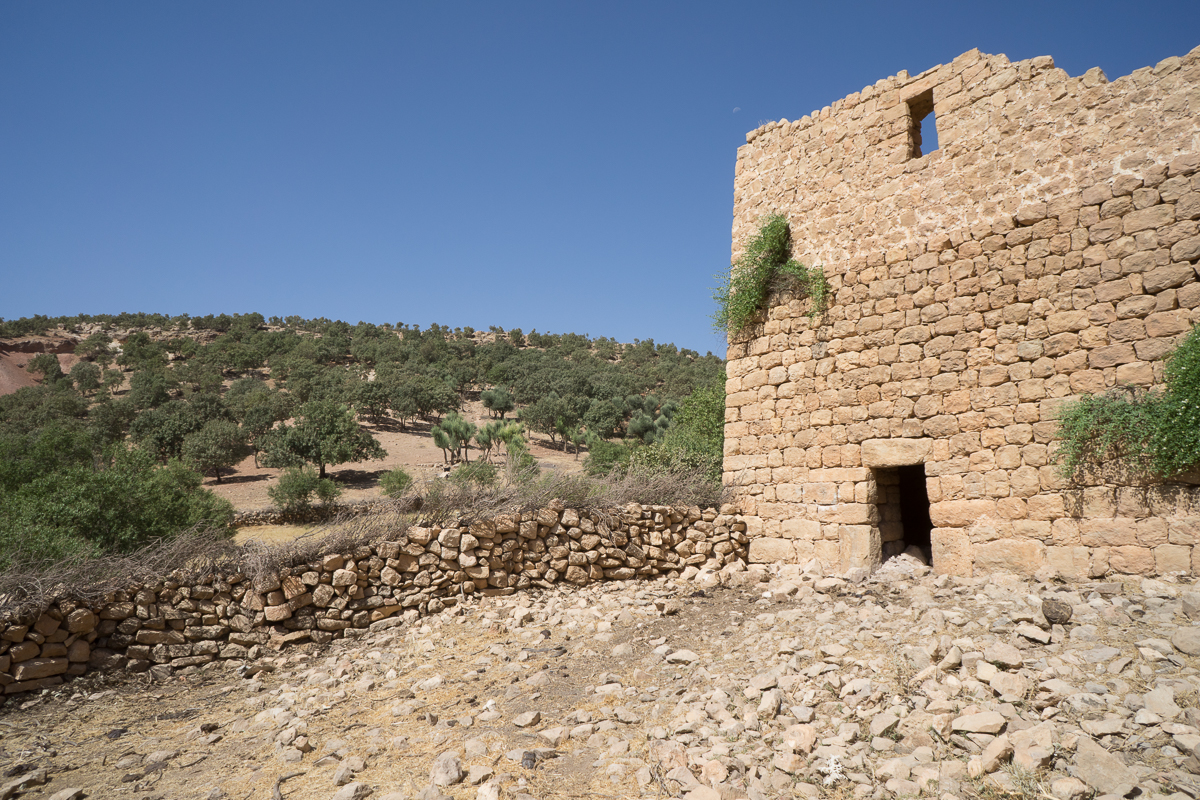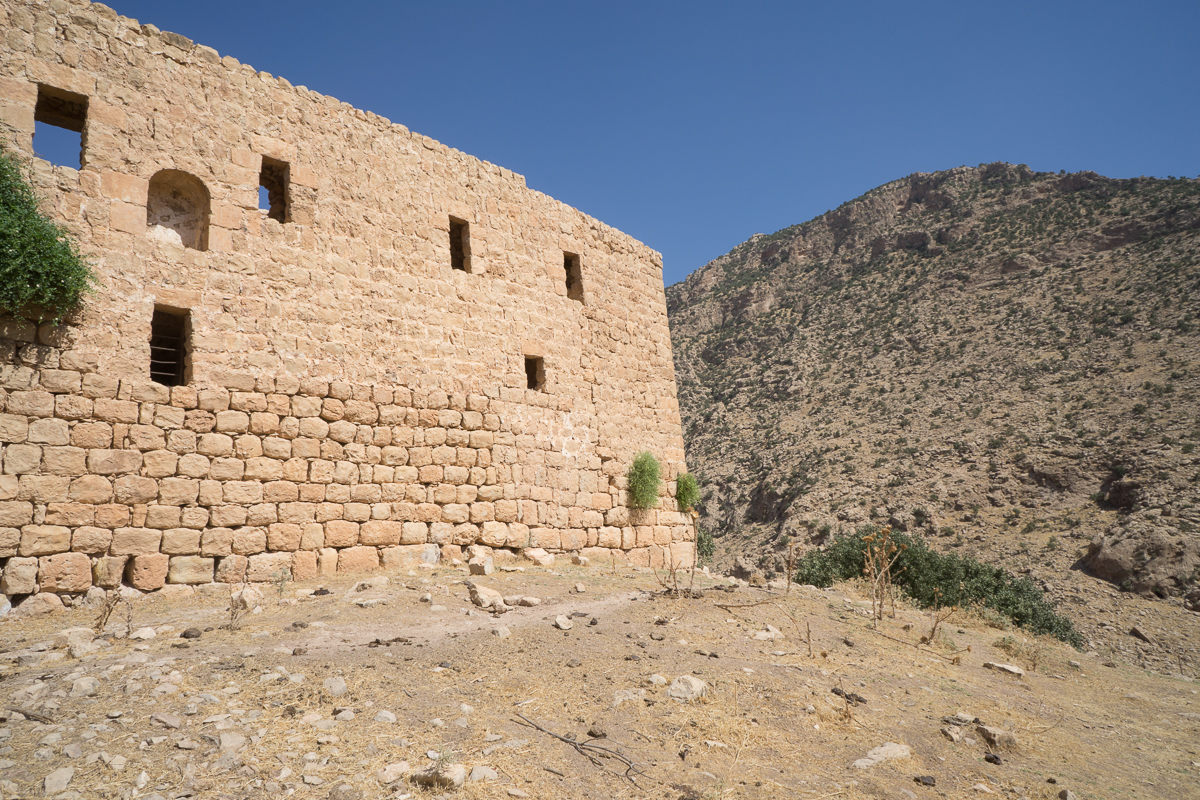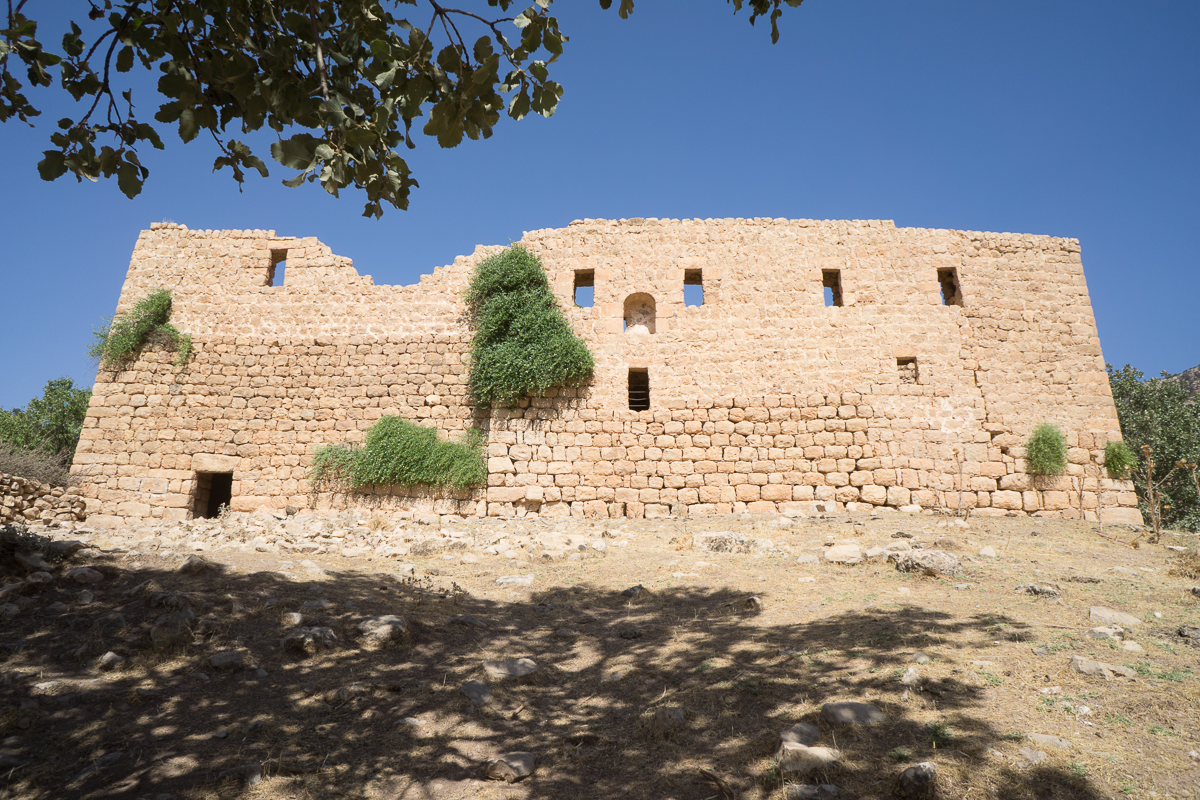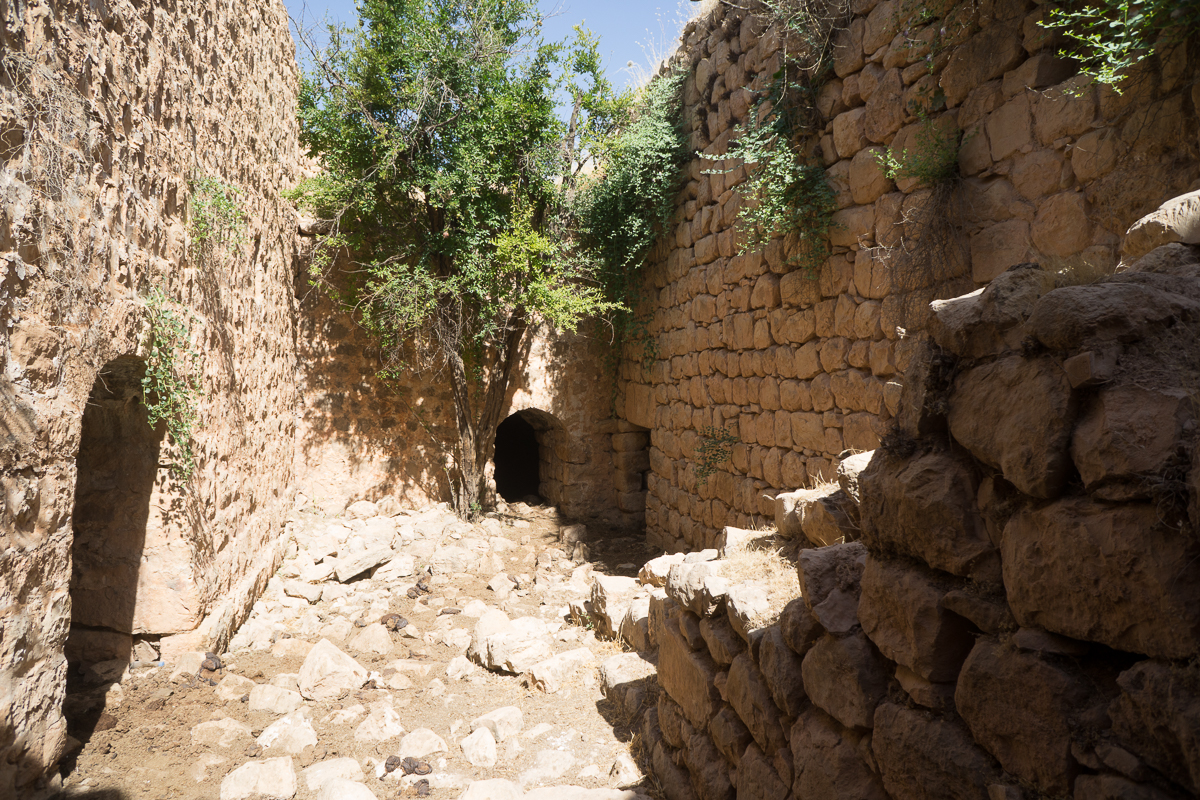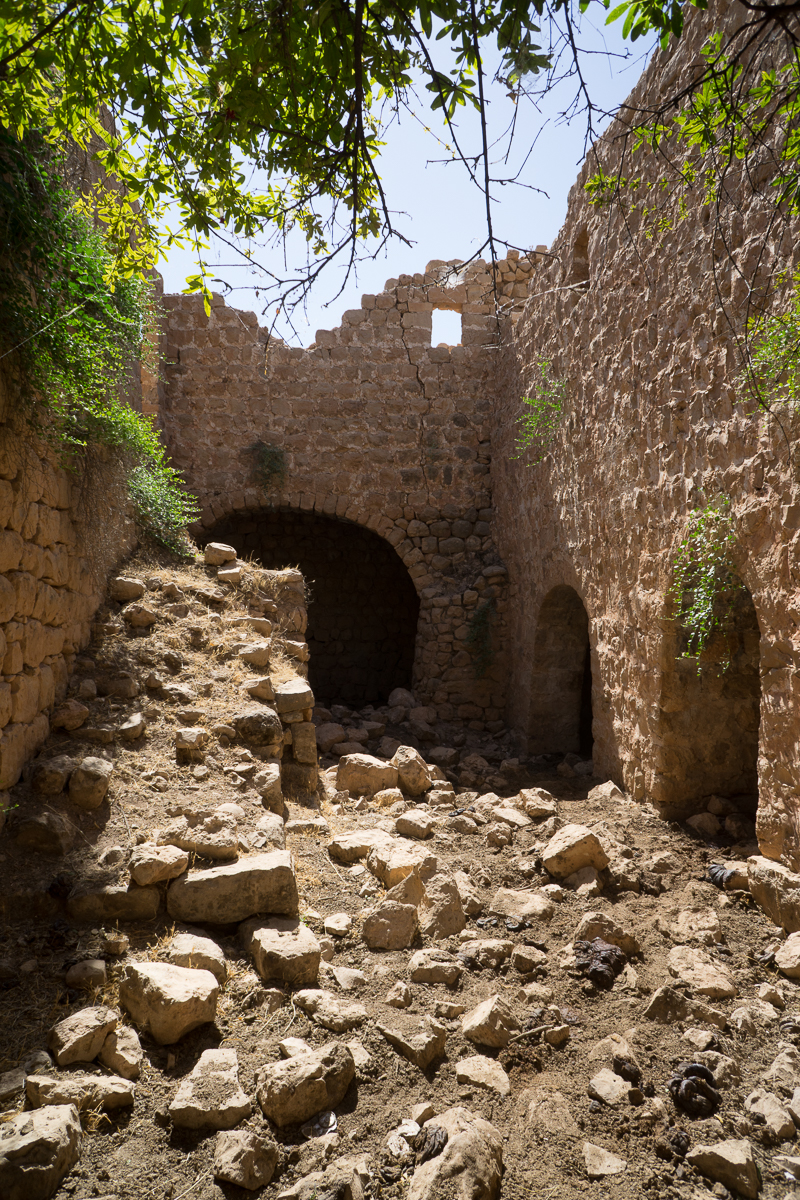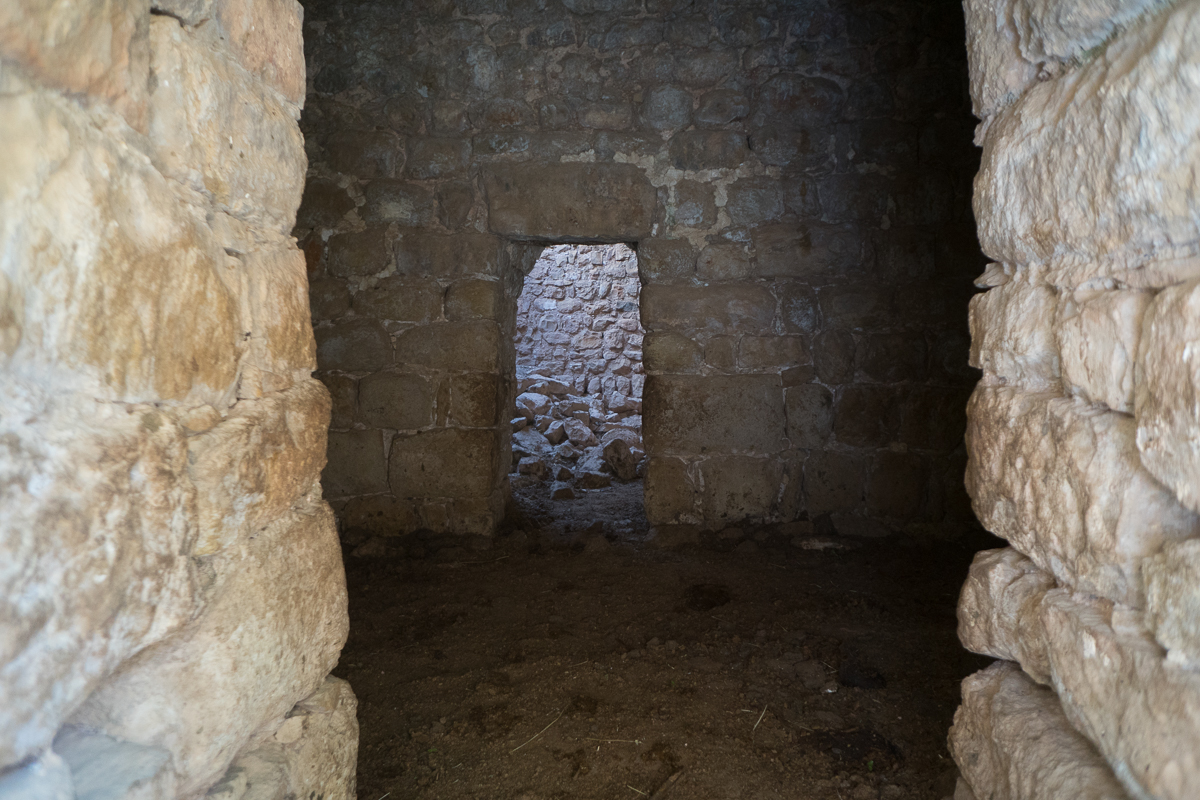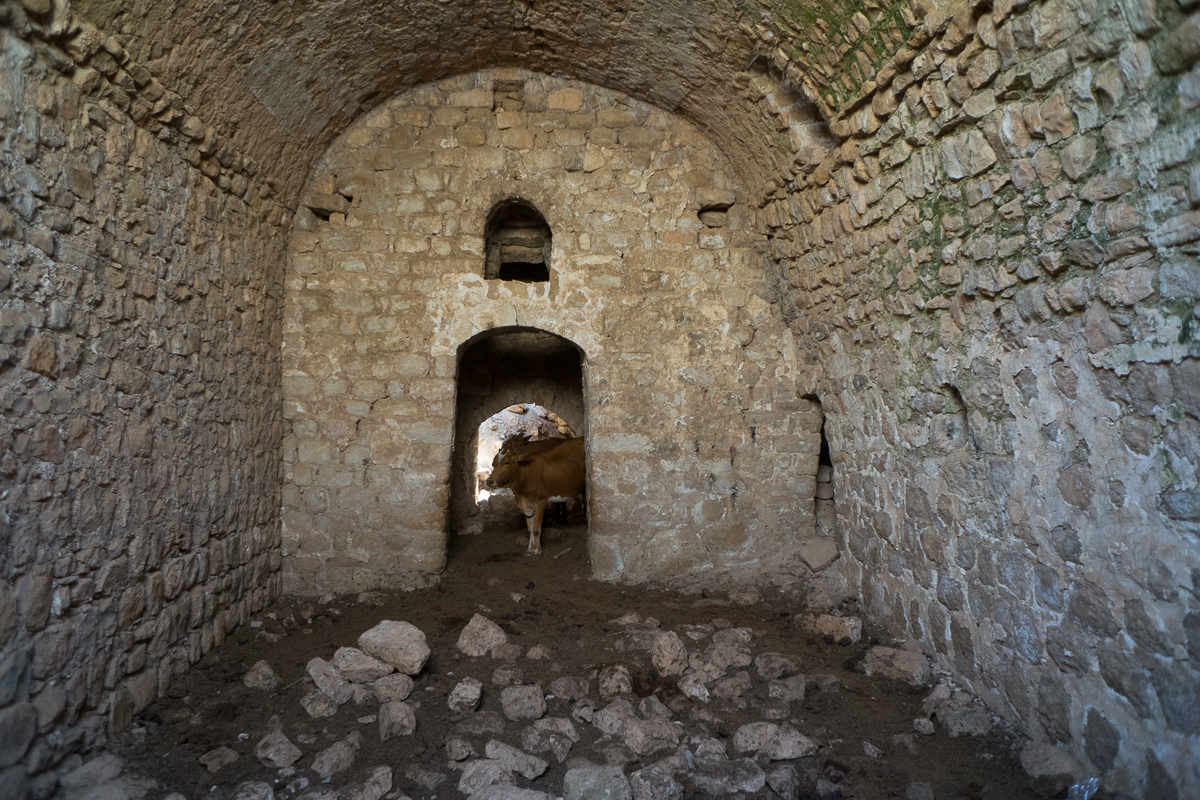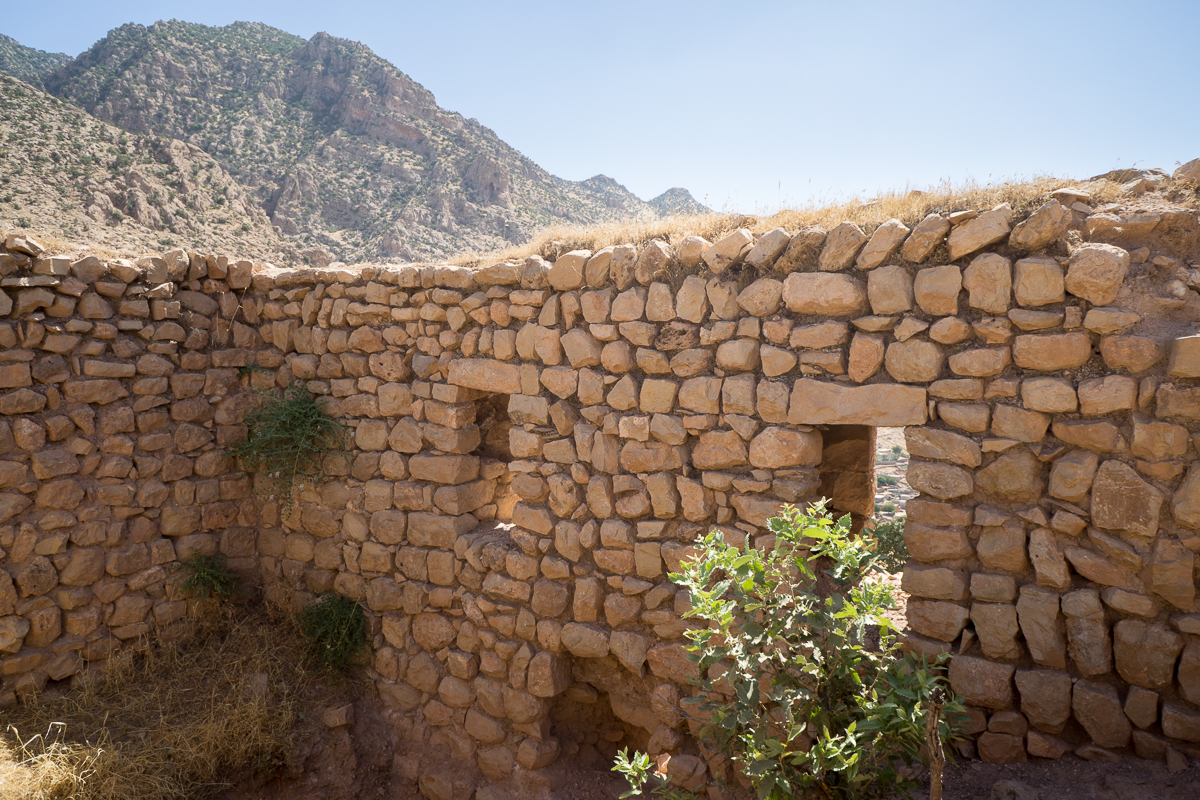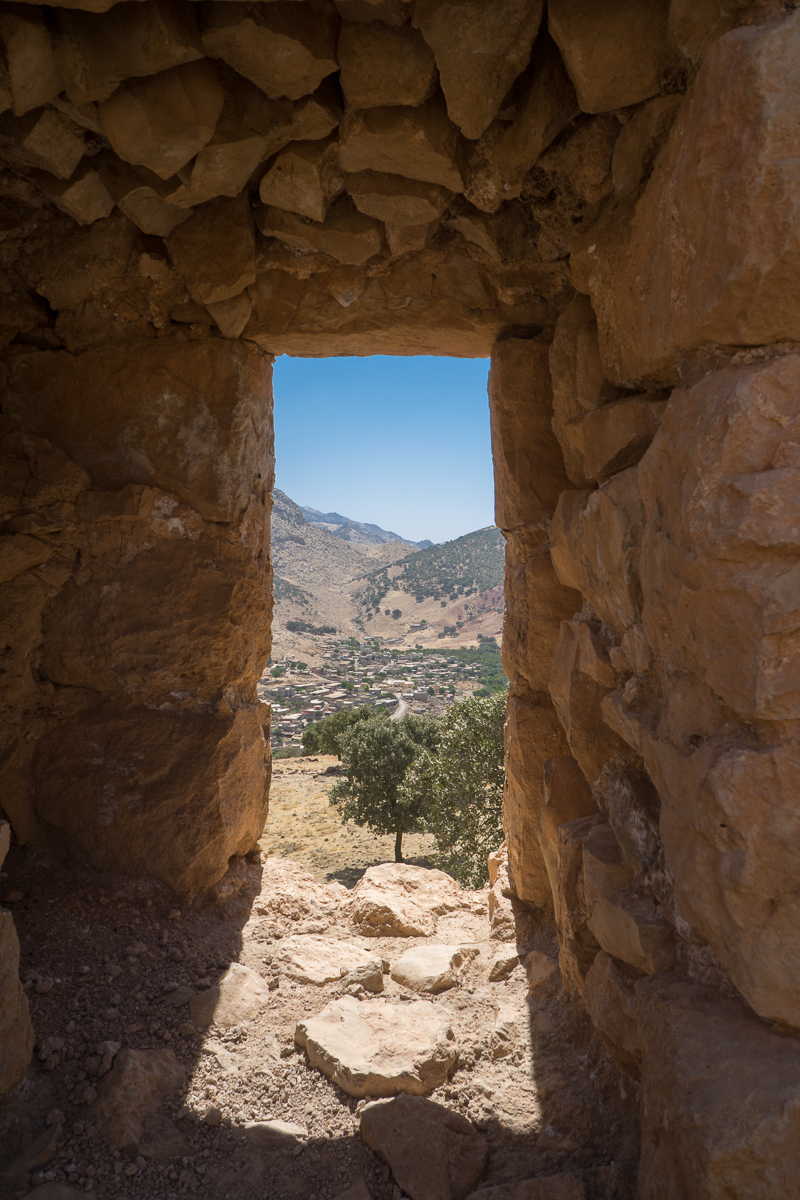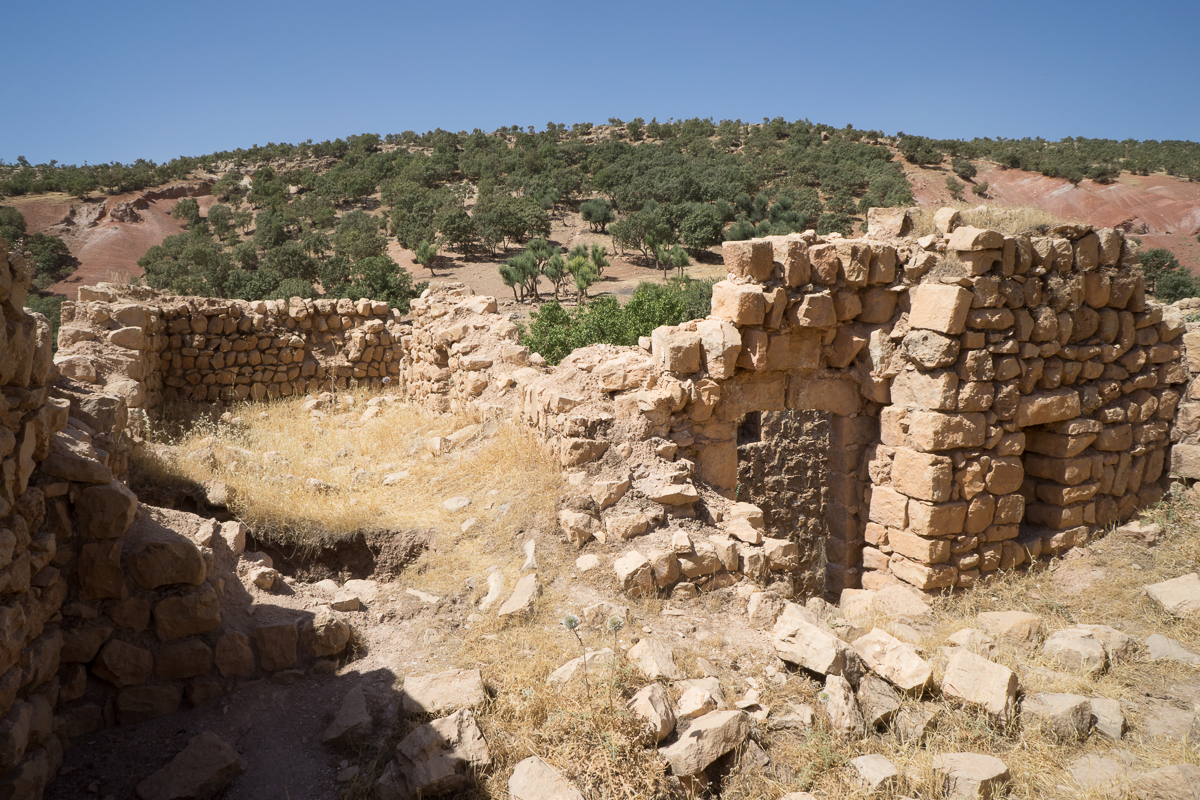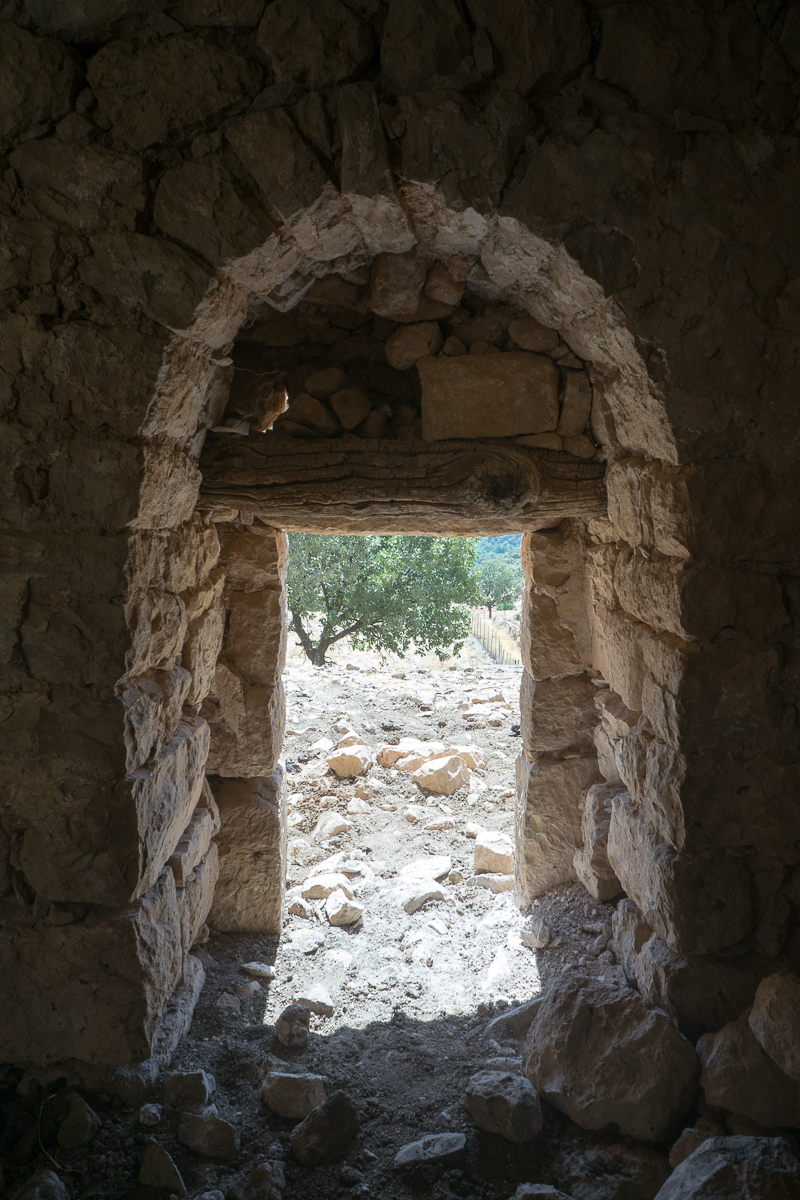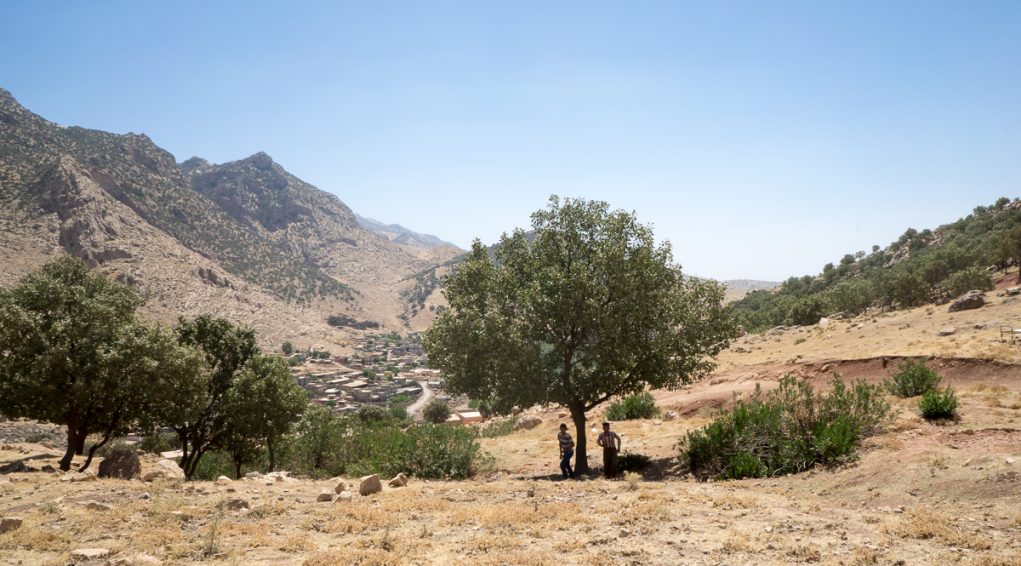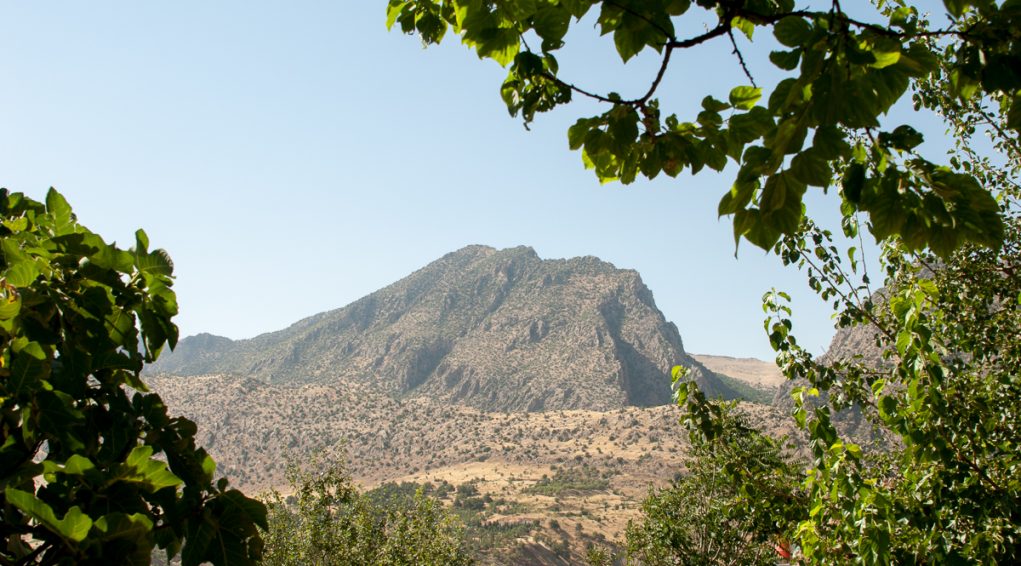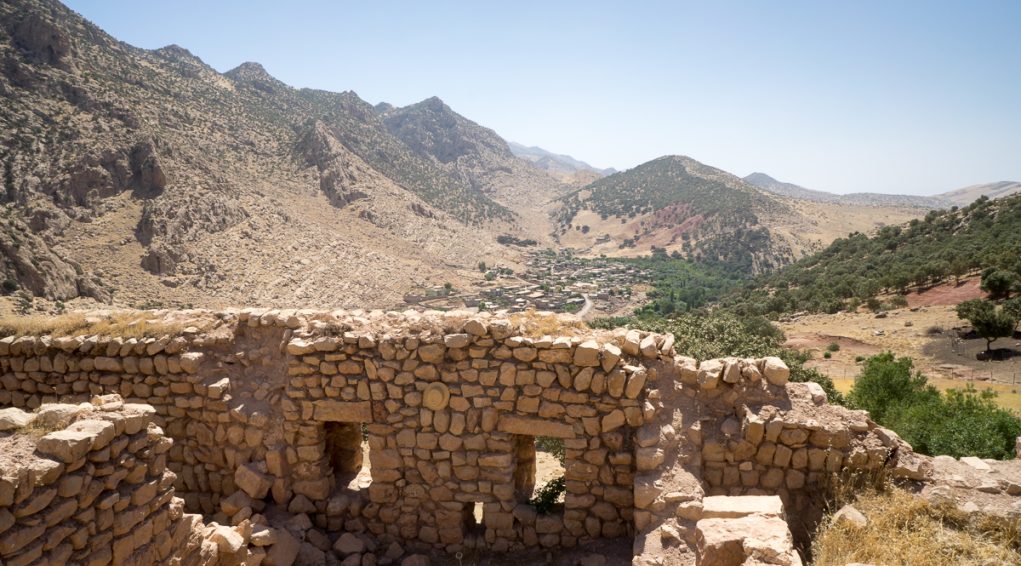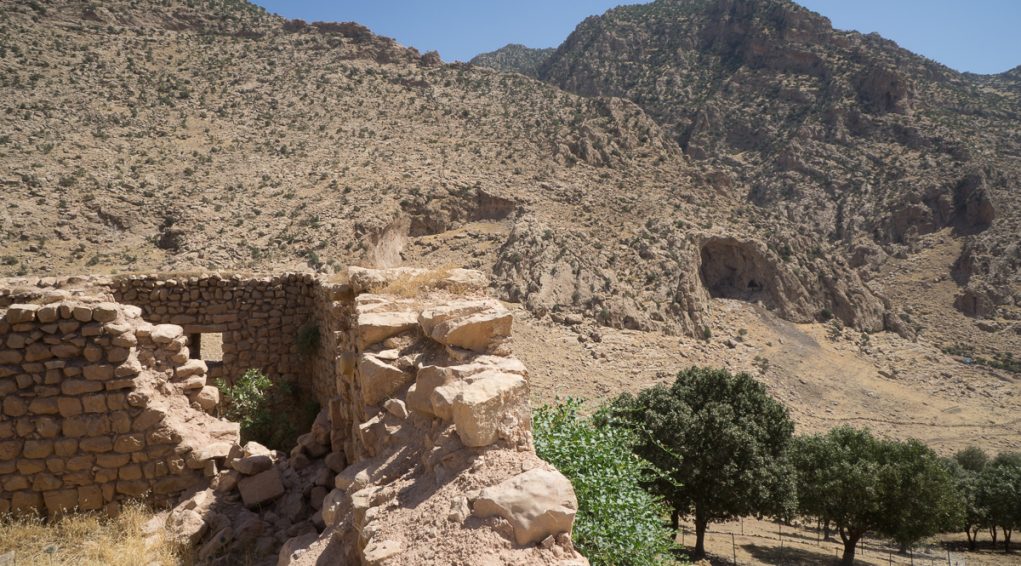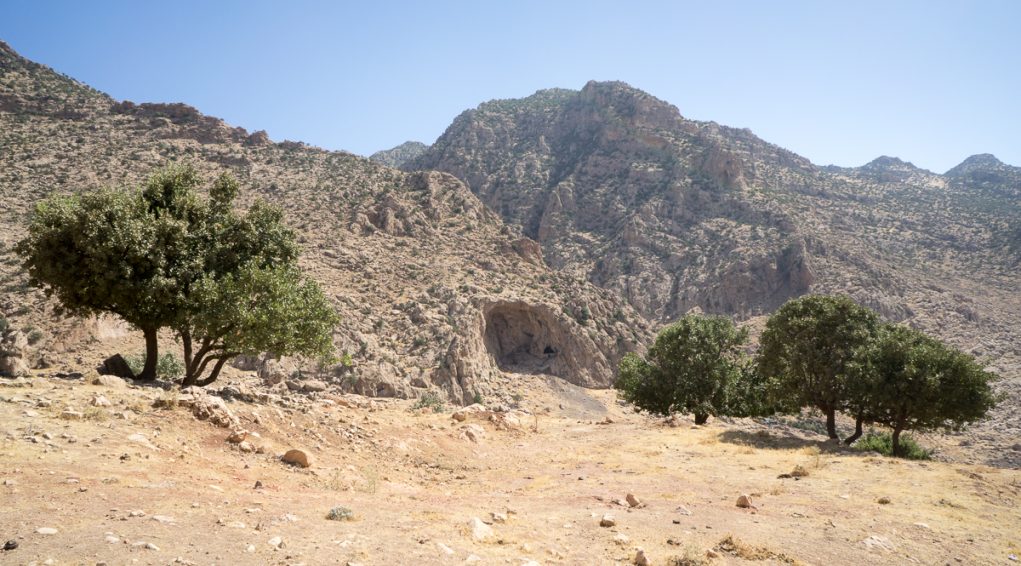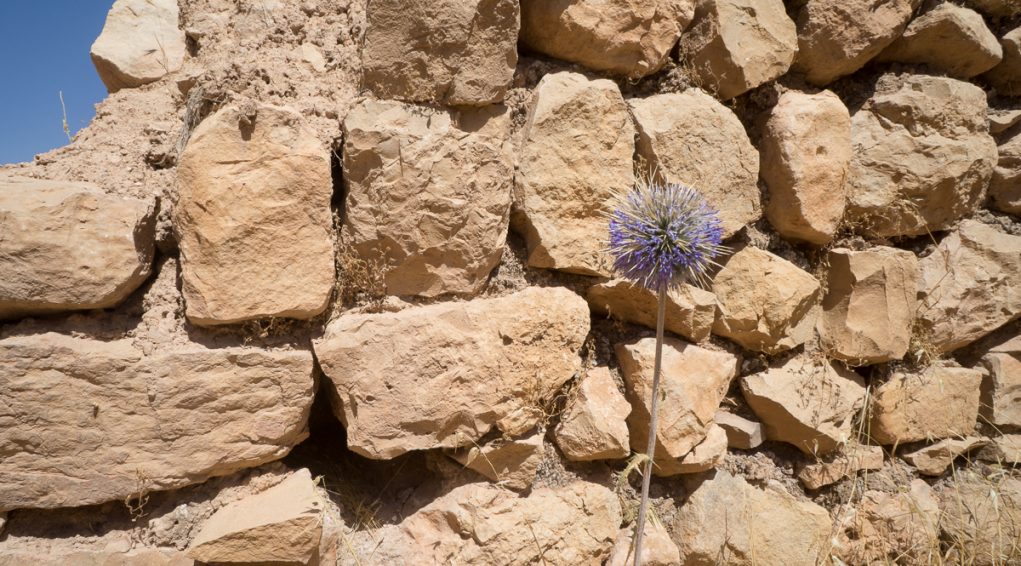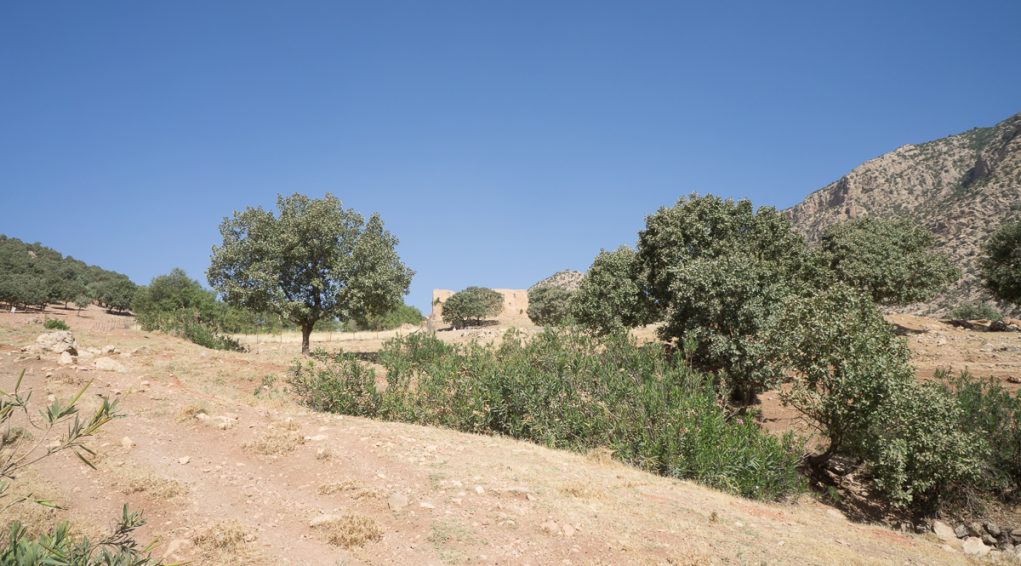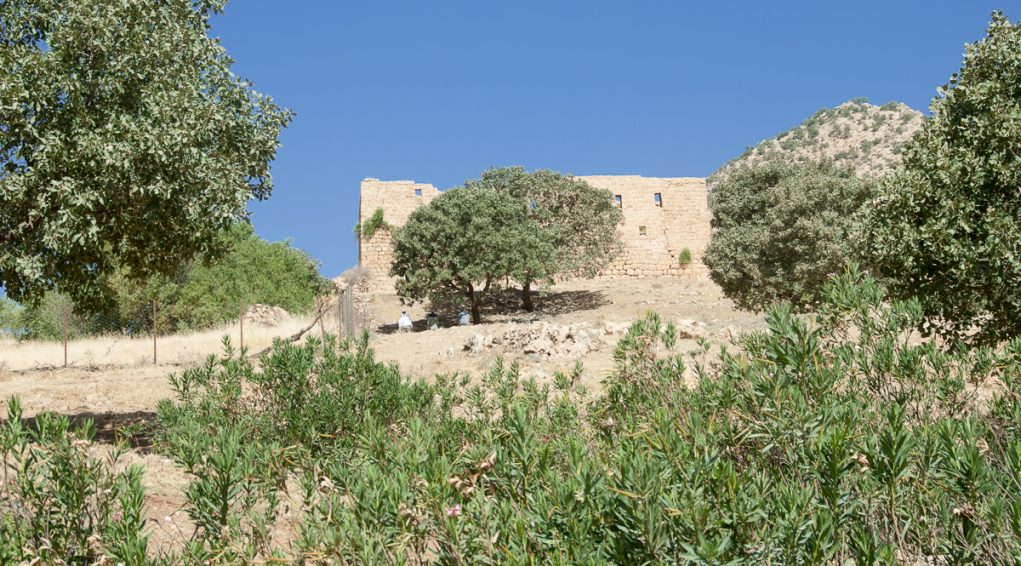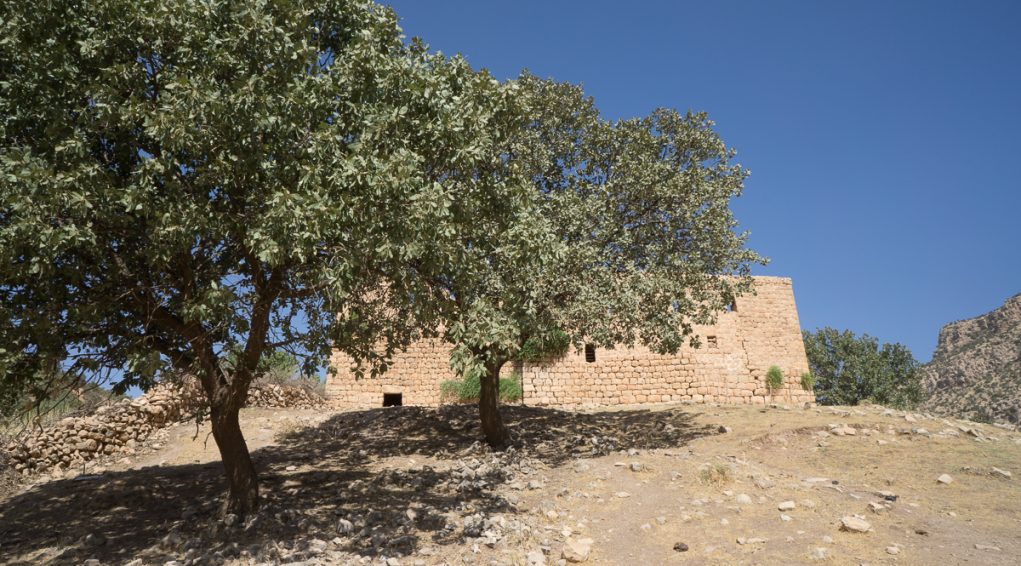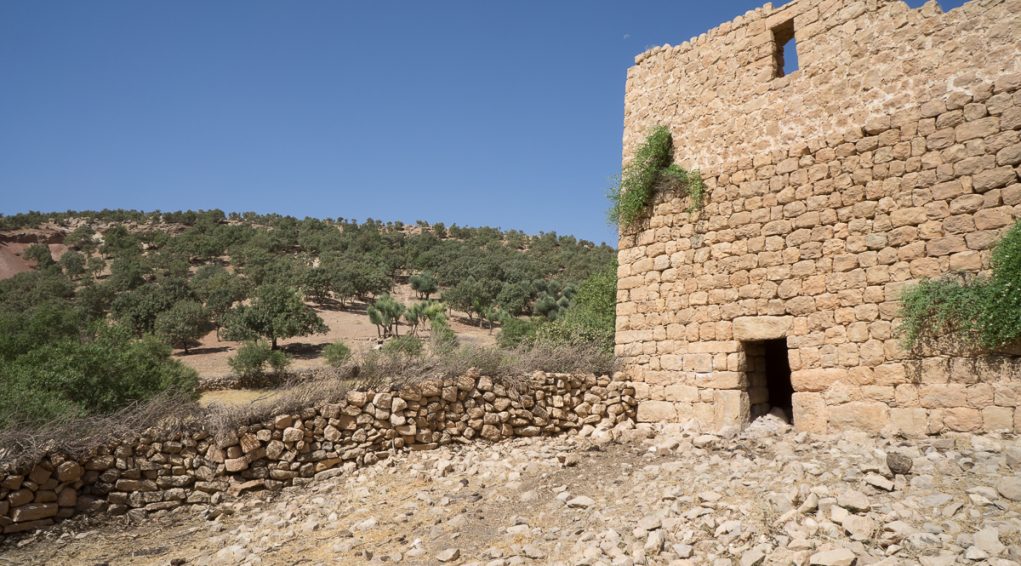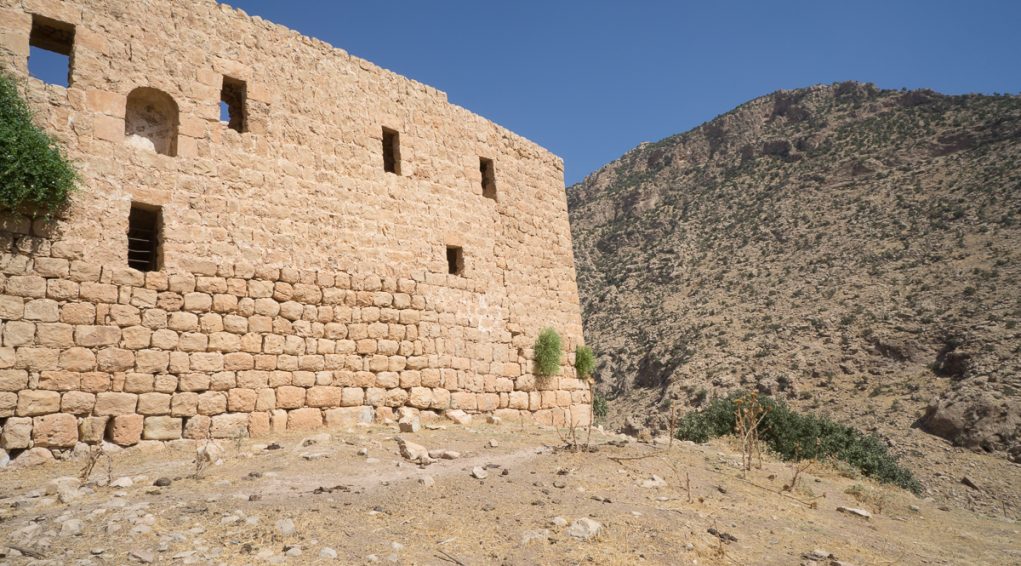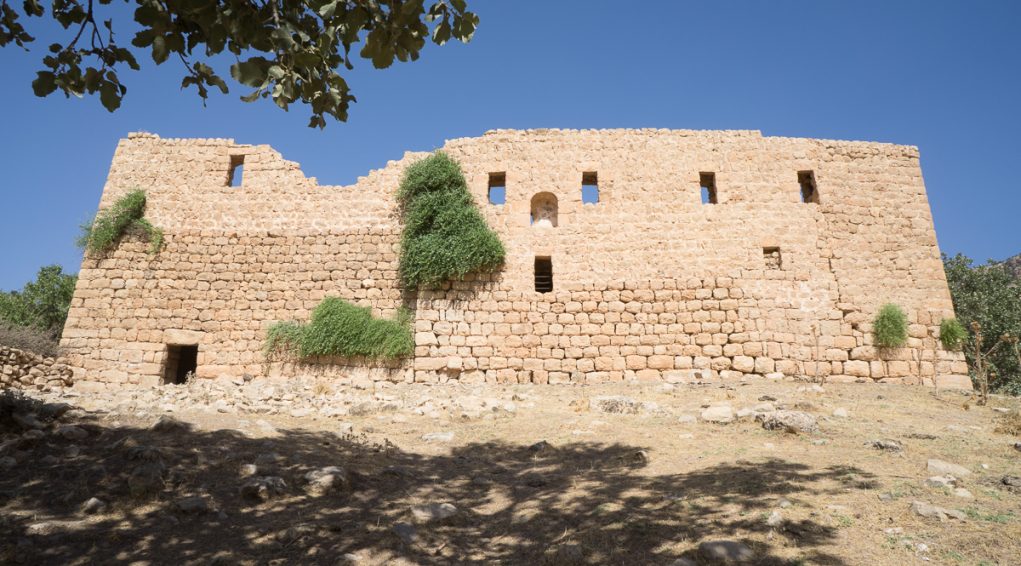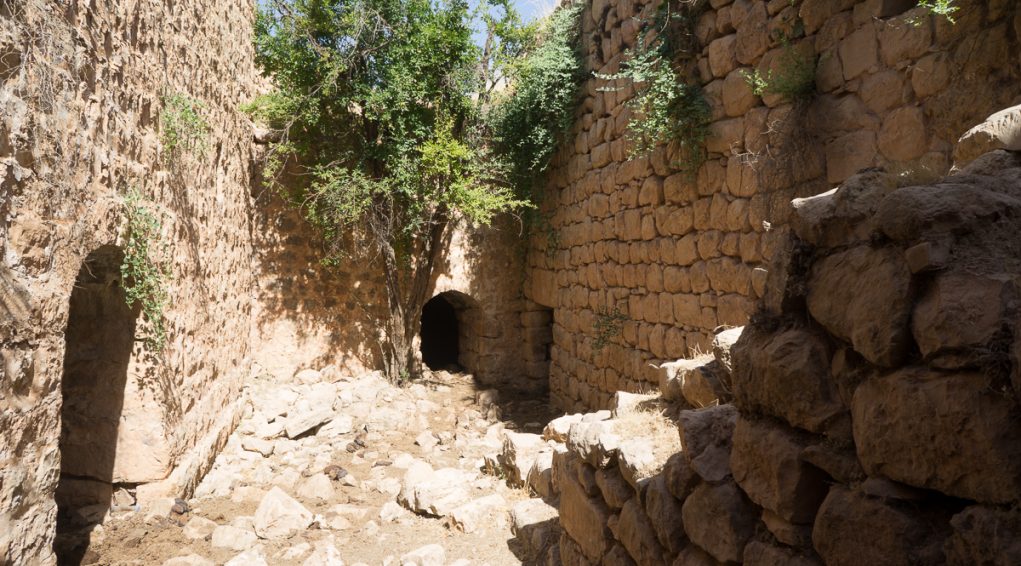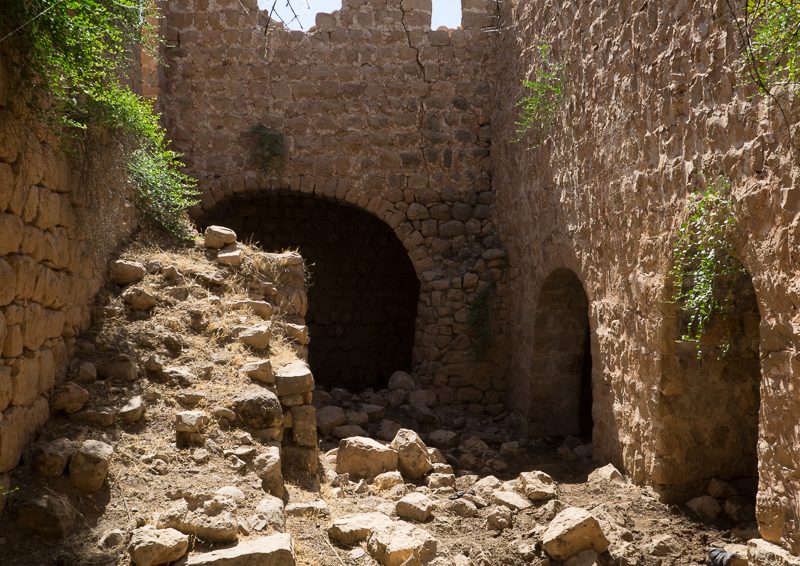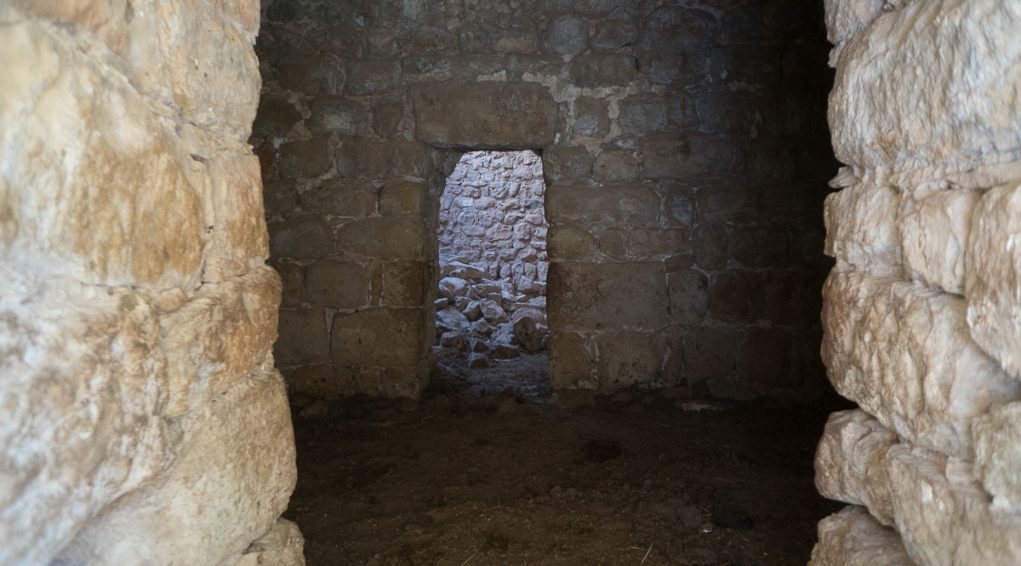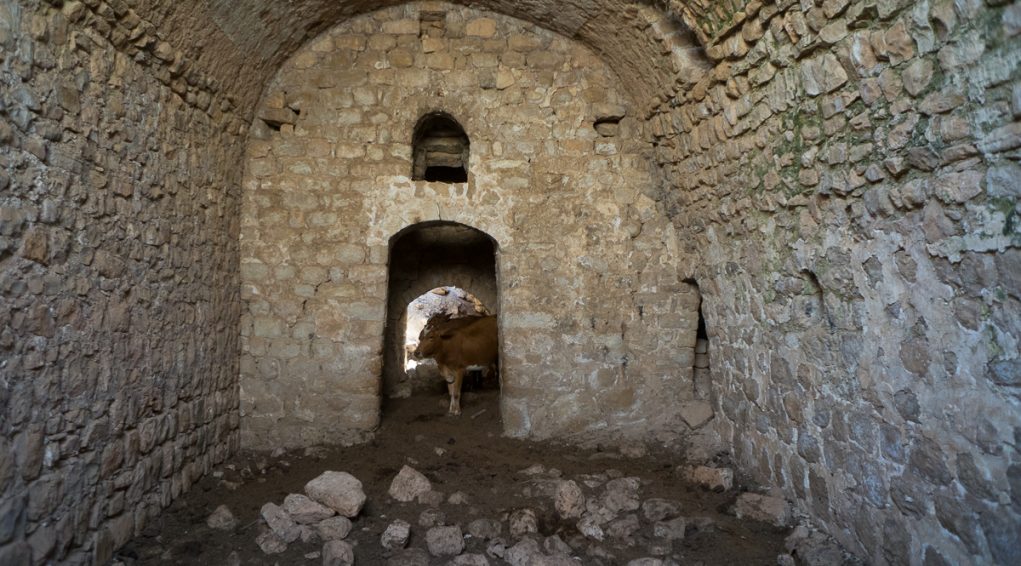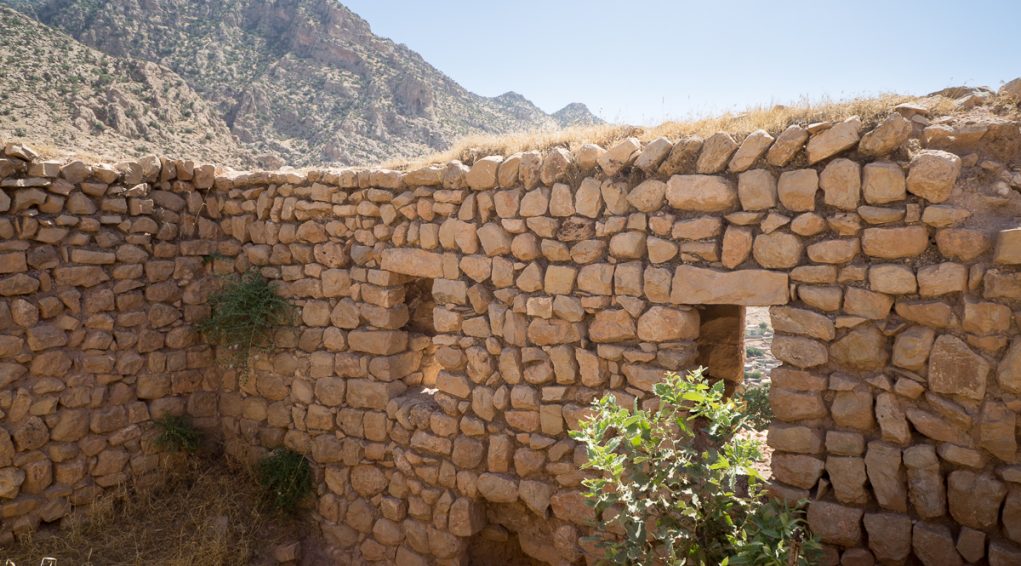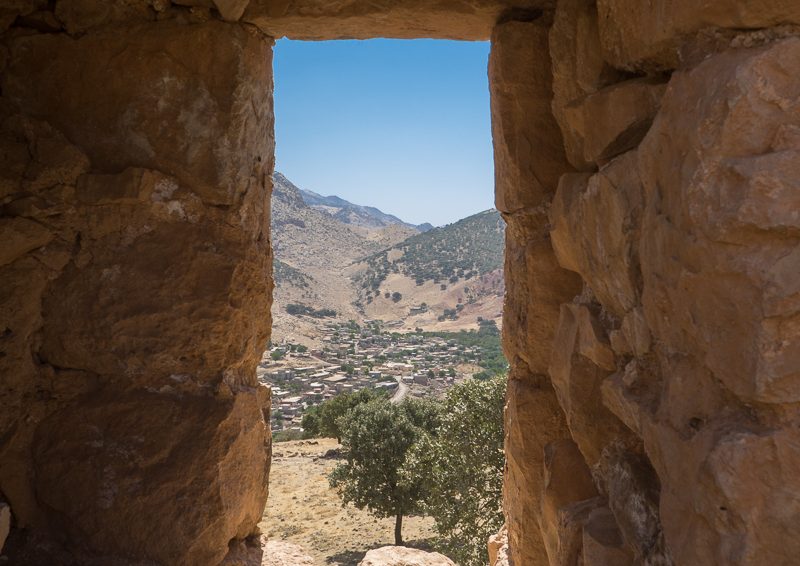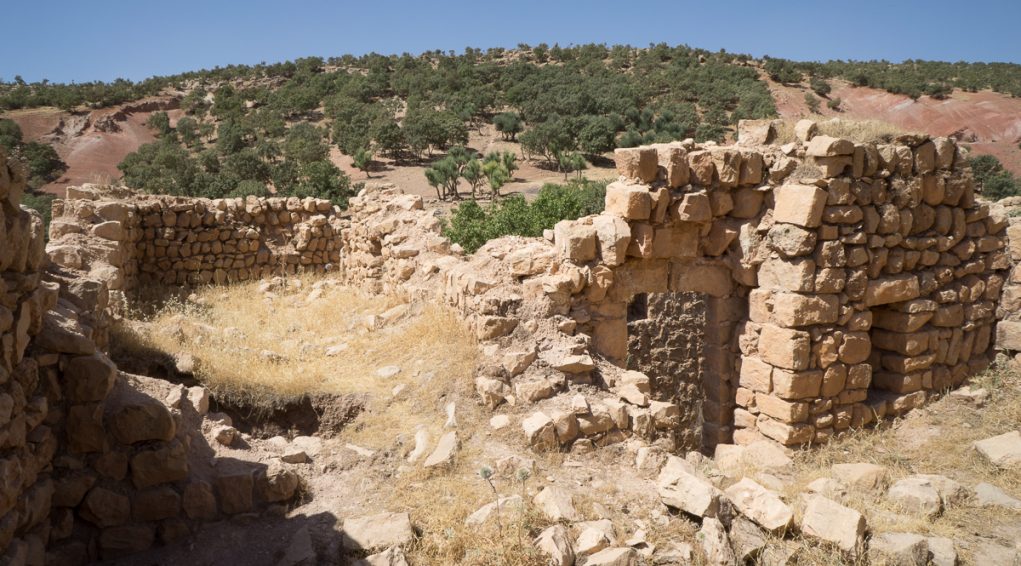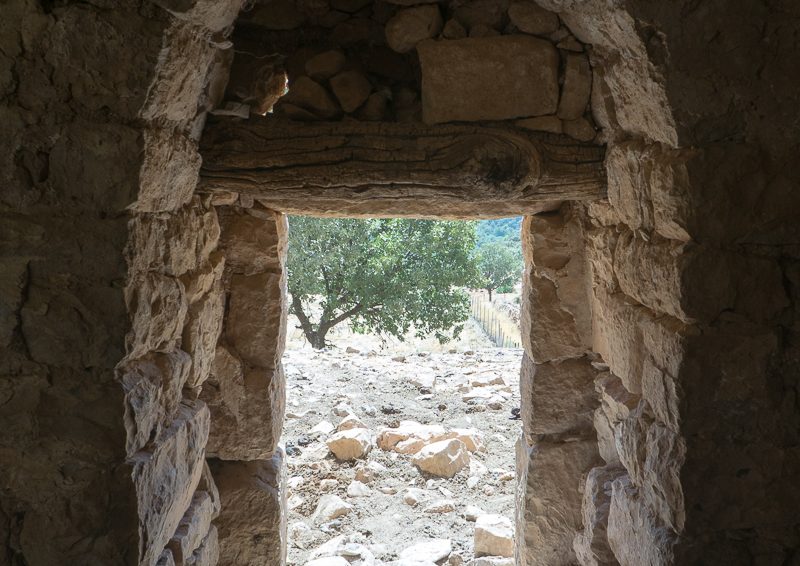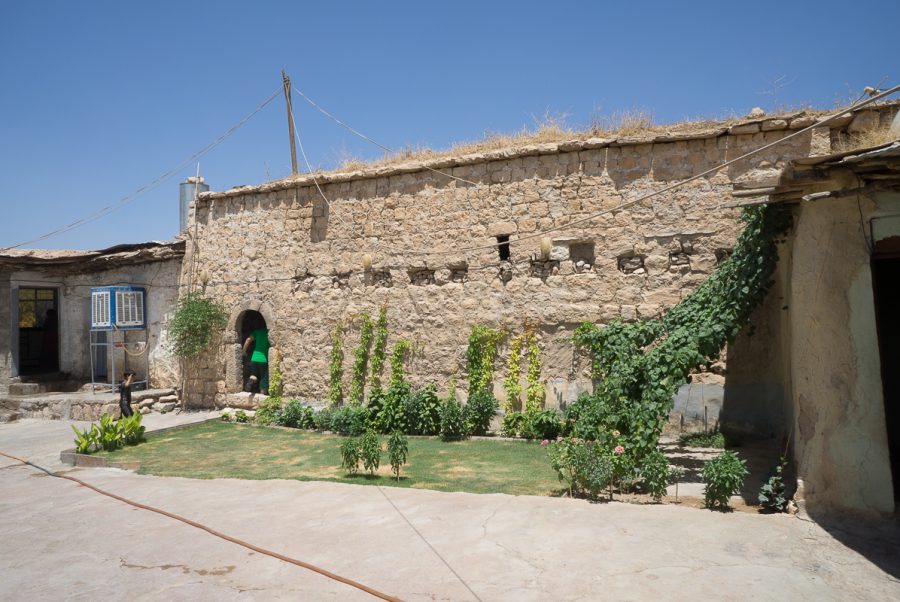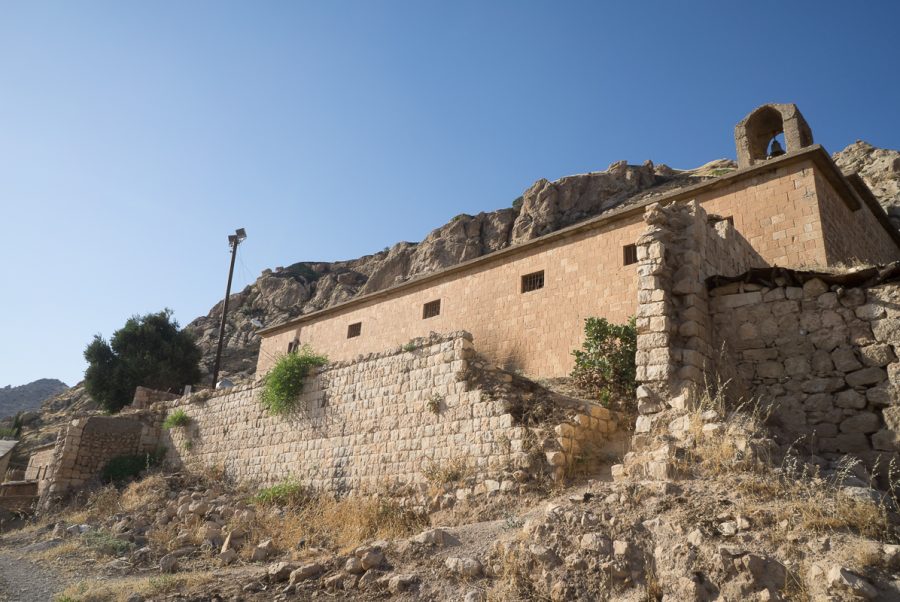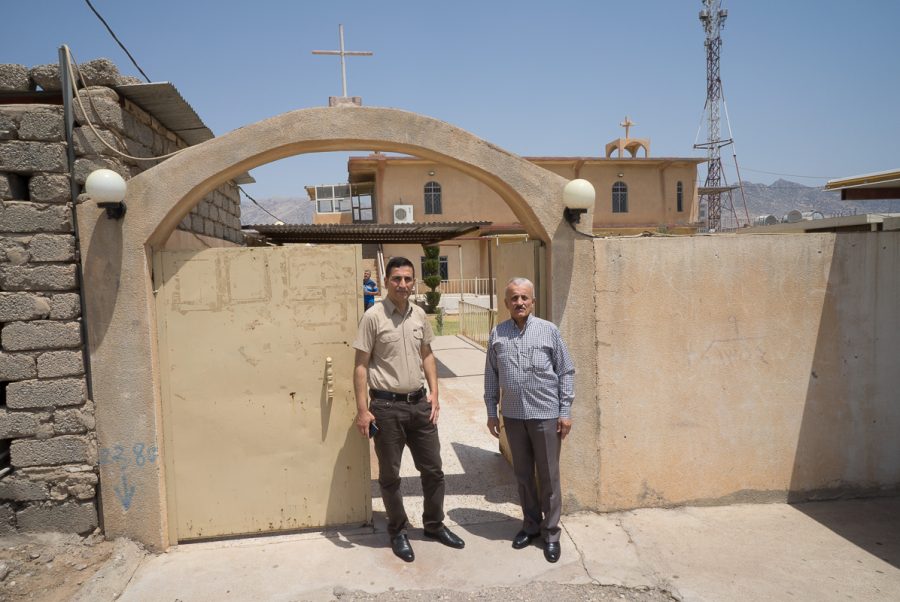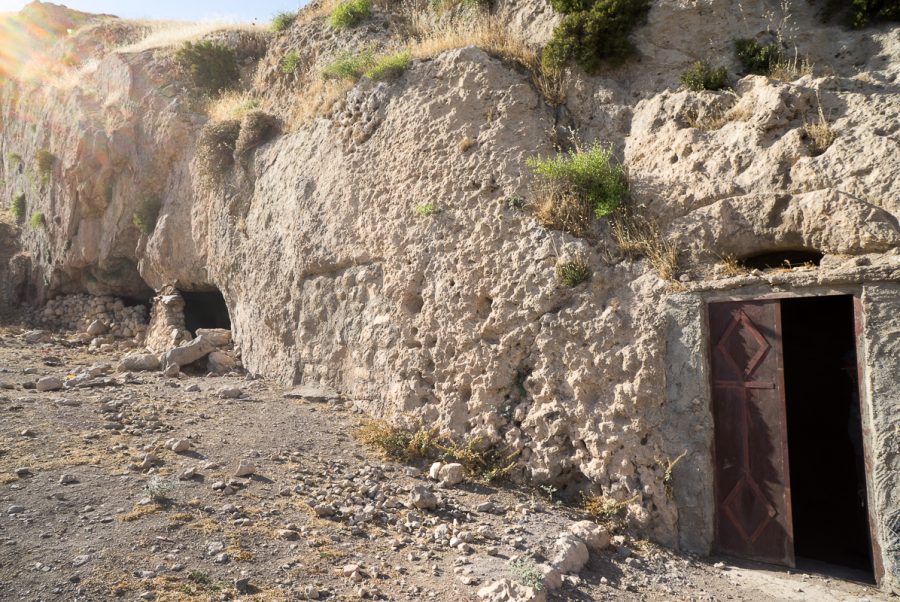The Mar Odisho Monastery in Gunduk
Mar Odisho Monastery in Gunduk lies at 36°47’56.99″N 43°47’17.46″E and 836 metres altitude.
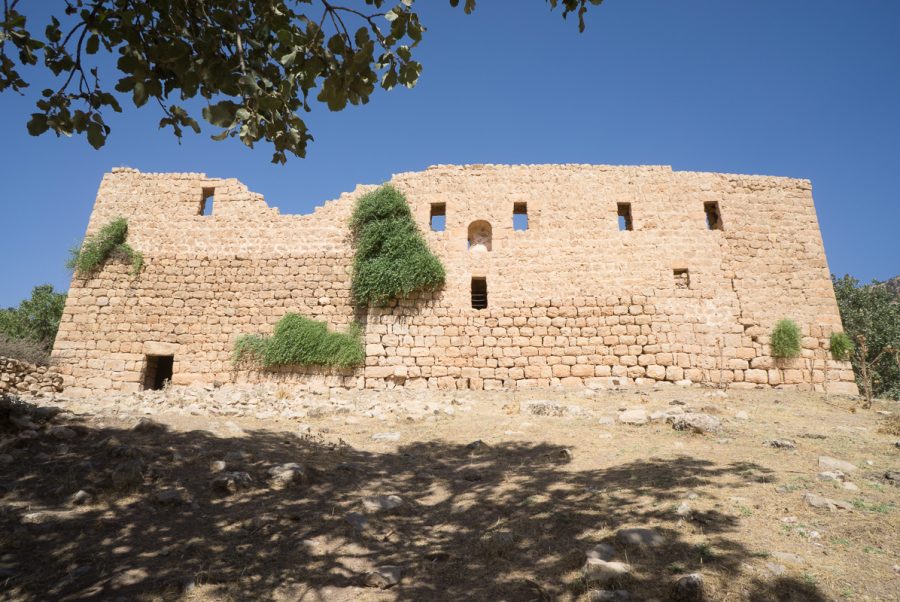
The Mar Odisho monastery was built on a promontory to the north-west of the village of Gunduk, on a site of special archaeological interest. From the top of the monastery, the view of the valley is delightful.
The last monastery in this remote, mountain region, the Mar Odisho monastery in Gunduk is a ruin, still standing, but very severely damaged. The only visible occupants are the herds of cows. It has essentially become a stable.
The restoration of this monastery would be beneficial from a heritage perspective, despite the fact that there is no longer a local Christian community.
Pic : The Mar Odisho monastery in Gunduk. East facade. July 2017 © Pascal Maguesyan / MESOPOTAMIA
Location
The Mar Odisho Monastery in Gunduk[1]lies at 36°47’56.99″N 43°47’17.46″E and 836 metres altitude.
Gunduk is located 110 km to the east of Dohuk-Nohadra and 100 km north of Erbil. The village, situated to the west of the Great Zab, 19 km to the north-west of Aqrah[2], backs onto a mountain range which borders the mountains of Iraqi Kurdistan.
The monastery is set slightly apart from the village to the north-west.
_______
[1]The village of Gunduk is also known as Nerem, Niramor Nerem Gundik.
Fragments of Christian history
According to the tradition, the origin of the Church of the East goes back to the apostles and evangelizing preachers like Thomas, Addai (some assert that Addai is also the disciple Thaddeus, also known as Jude) and Mari. The new religion would have been preached specifically to local Jewish communities. Gunduk is actually well known for having had a synagogue dedicated to the prophet Eli and for being home to a Jewish community of 15 families up until 1930, which moved to Aqrah in the 1940s[1].
This Christianity was born out of this apostolic tradition, spread around Mesopotamia during the three first centuries, but it is really from the 4th century on and with the large number of martyrs persecuted by the Persian king Shapur II, that the Assyrian Church of the East really stepped into local history.
From the very long Christian history, let us notice that these mountains, very difficult to access to in old days, were both at the same time a place of flourishing and protection for the Church of the East.
The Catholic, specifically Dominican, missions flourished here from the 18th century onwards and converted the local Christian communities to Catholicism.
At the start of the 20th century, on the eve of the First World War, the village of Gunduk and its remaining Christian community, was part of the cazaof Aqrah in the vilayetof Mosul, part of the Ottoman Empire.
The circumstances of the Christians in the most remote regions of the Empire became catastrophic during the genocide of the Armenians, Assyrians, Chaldeans and Syriacs in the Ottoman Empire from 1915-1918.
The rest of the 20th century was not much better for the Assyrian-Chaldeans from the mountains of Iraqi Kurdistan. Between 1961 and 1991, the successive wars which opposed the Iraqi government and the Kurdish peshmerga weighed heavily on the Christian communities and their heritage in these regions which were frequently bombed, notably with chemical weapons, where the populations were evacuated and access was prohibited. This is how Gunduk saw its Christian community disappear.
_______
Fragments of a hagiography
The tradition relates that Mar Odisho lived in the 4th century, in a cave in the Bet Brach mountain range (near Shaqlawa and Erbil). He is also said to have stayed in Van (south east of modern-day Turkey). Wherever he used to live, he was imprisoned by the governor in Shaqlawa, the future Mar Qardagh. Converted to Christianity and baptised by Mar Odisho himself, Mar Qardagh was martyred in Arbil for having refused to abandon his faith and turn back to paganism. An important preacher in the Church of the East, Mar Odisho, who was not martyred, gave his name to numerous churches in Mesopotamia. Odisho also means “servant of God” in Aramaic. That is why many Christian sites in Mesopotamia bear this name.
Epilogue of the Christian presence
In 1913, there was still a Christian community in Gunduk of 100 Chaldeans, with a priest and a church[1]. A century later, there were no Christians left in this rural location[2]. The population of Gunduk became entirely Kurdish Muslim. The only remaining trace of the village’s Christian past are the ruins of the Mar Odisho monastery.
_______
[1]InL’Église chaldéenne catholique, autrefois et aujourd’hui, Abbé Joseph Tfinkdji, 1913, Extract from the Annuaire Pontifical Catholique from 1914, p. 51. In which Gunduk is referred to as Niram.
[2]On the day of the MESOPOTAMIA team’s visit to Gunduk, on 16 July 2017, there was not one single Christian in the village.
History and description of the Mar Odisho monastery
The Mar Odisho monastery is built on a promontory to the north-west of the village of Gunduk, on a site of special archaeological interest, where Polish archaeologists identified sculptures from the middle of the 3rd millennium BC[1]. From the top of the monastery, the view of the valley is delightful.
The Mar Odisho monastery was probably “built on the site of an ancient monastery[2]”, but it is very difficult to obtain any more precise information. It is mentioned in manuscripts dating from 1693 – 1700. A religious community attempted to settle here in the 1950s, but it would appear that the living conditions were too harsh and so this didn’t last.
The last monastery in this remote, mountain region, the Mar Odisho monastery in Gunduk is a ruin, still standing, but very severely damaged. The only visible occupants are the herds of cows. It has essentially become a stable.
Surrounded by a perimeter of 20/22 metres, the monastery is a building made of natural stone blocks jointed with mortar, composed of a set of monastery chambers. The church is located to the north. Its sanctuary was “previously adorned with a canopy[3]”. The interior garden is also of note because it “appears to have been added later[4]”. The building has semi-circular barrel vaults. The doors are also semi-circular arches. The windows are small and rectangular.
The restoration work undertaken during the most recent period when the site was occupied is clearly visible (reinforcement, enhancement, transformation) on the facades and inside the building. The interior walls were covered with a coating, of which a few traces remain.
The floor level is raised due to the accumulation of broken stones, organic and plant waste. Unfortunately, there are no identifiable inscriptions or engravings on the stone.
The restoration of this monastery would be beneficial from a heritage perspective, despite the fact that there is no longer a local Christian community.
_______
[1]http://archeo.edu.pl/ugzar/The_site_catalogue_2013a.compressed-libre.pdf
[2]In “Le Dieu du silence. Patrimoine des Couvents en Irak”,Vincent van Vossel, Geuthner, 2017, p.21 à 23.
[3]In “Le Dieu du silence. Patrimoine des Couvents en Irak”,Vincent van Vossel, Geuthner, 2017, p.21 à 23.
Monument's gallery
Monuments
Nearby
Help us preserve the monuments' memory
Family pictures, videos, records, share your documents to make the site live!
I contribute